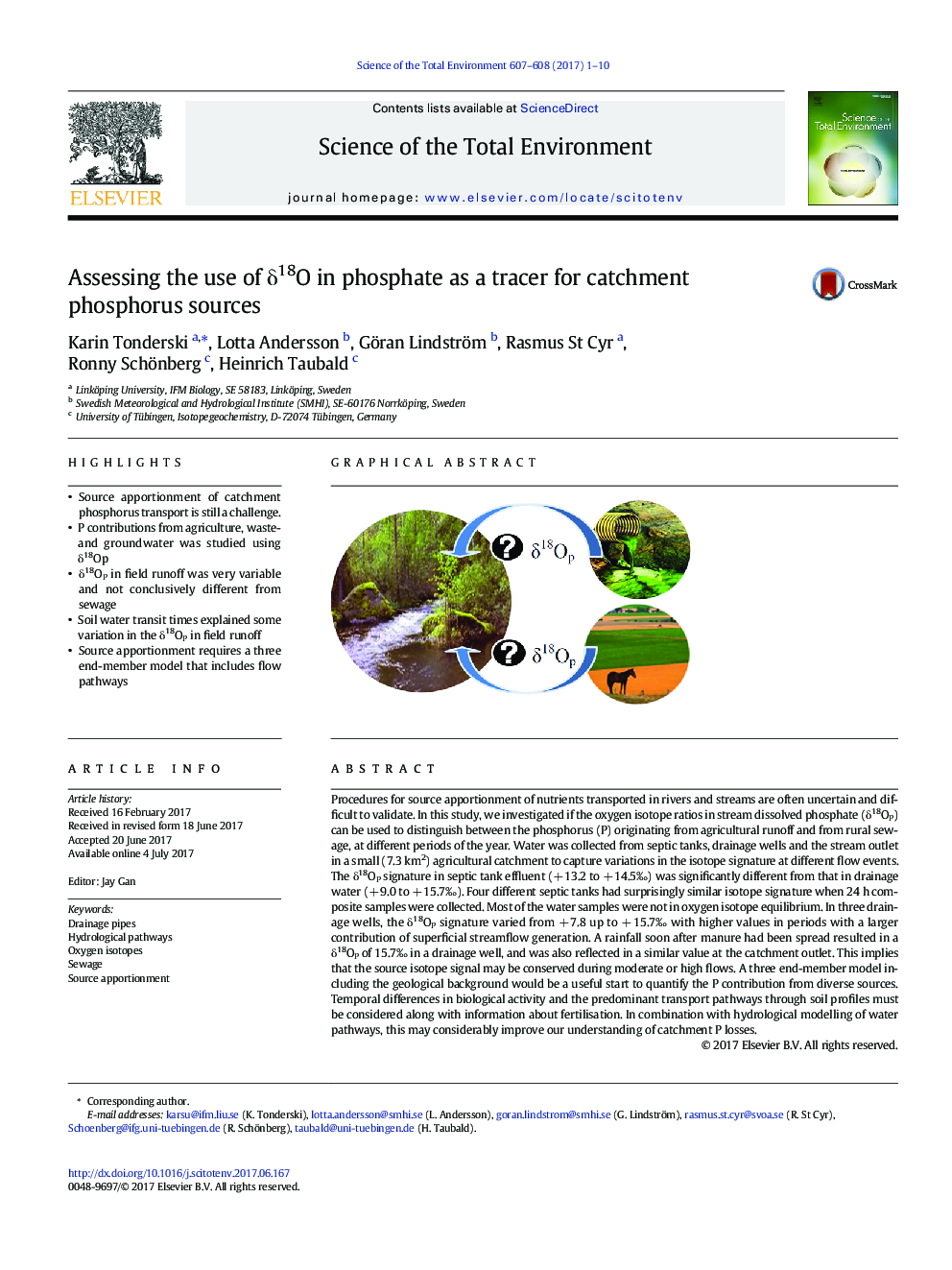| کد مقاله | کد نشریه | سال انتشار | مقاله انگلیسی | نسخه تمام متن |
|---|---|---|---|---|
| 5749958 | 1619694 | 2017 | 10 صفحه PDF | دانلود رایگان |

- Source apportionment of catchment phosphorus transport is still a challenge.
- P contributions from agriculture, waste- and groundwater was studied using δ18Op
- δ18OP in field runoff was very variable and not conclusively different from sewage
- Soil water transit times explained some variation in the δ18OP in field runoff
- Source apportionment requires a three end-member model that includes flow pathways
Procedures for source apportionment of nutrients transported in rivers and streams are often uncertain and difficult to validate. In this study, we investigated if the oxygen isotope ratios in stream dissolved phosphate (δ18OP) can be used to distinguish between the phosphorus (P) originating from agricultural runoff and from rural sewage, at different periods of the year. Water was collected from septic tanks, drainage wells and the stream outlet in a small (7.3 km2) agricultural catchment to capture variations in the isotope signature at different flow events.The δ18OP signature in septic tank effluent (+ 13.2 to + 14.5â°) was significantly different from that in drainage water (+ 9.0 to + 15.7â°). Four different septic tanks had surprisingly similar isotope signature when 24 h composite samples were collected. Most of the water samples were not in oxygen isotope equilibrium. In three drainage wells, the δ18OP signature varied from + 7.8 up to + 15.7â° with higher values in periods with a larger contribution of superficial streamflow generation. A rainfall soon after manure had been spread resulted in a δ18OP of 15.7â° in a drainage well, and was also reflected in a similar value at the catchment outlet. This implies that the source isotope signal may be conserved during moderate or high flows. A three end-member model including the geological background would be a useful start to quantify the P contribution from diverse sources. Temporal differences in biological activity and the predominant transport pathways through soil profiles must be considered along with information about fertilisation. In combination with hydrological modelling of water pathways, this may considerably improve our understanding of catchment P losses.
273
Journal: Science of The Total Environment - Volumes 607â608, 31 December 2017, Pages 1-10